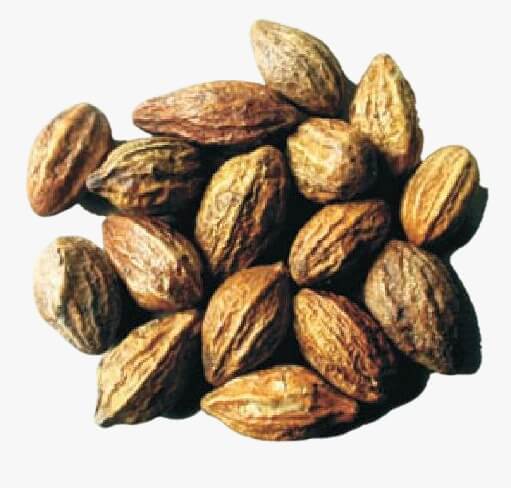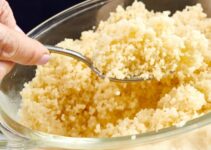What is the meaning of Myrobalan?
Terminalia chebula (Chebulic Myrobalan) powder is a simple formulation made of dried ripe fruits commonly advocated as an agent in Ayurveda for improving gastrointestinal motility. Chebulic myrobalan is found to increase the percentage of gastric emptying. It is used for constipation and various gastrointestinal and systemic problems. Scientific studies have established its stomachic, laxative and anti-flatulence actions. Judicious use of Haritaki with necessary dietary and lifestyle changes can treat constipation successfully and improve the gut’s physiological status. Myrobalan is associated with many essential services and health benefits mentioned here.

Different names of Myrobalan
- Sanskrit: Haritaki
- Hindi: Hardh, Har
- English: Myrobalan, Indian Gall Nut
- Latin: Terminalia chebula Retz., (T. reticulata)
6 wonder uses of myrobalan
- Take powdered fruit rind of chebulic myrobalan (Terminalia chebula) and whole plant of thistles (Eclipta alba) in equal quantities. A dose of 3 to 6 g should be taken with 12 g of jaggery and warm water twice/day to cure hyperacidity.
- Chebulic myrobalan (Terminalia chebula) clears excess vata from the bowel. Triphala, a mixture of chebulic myrobalan, Indian gooseberry (Emblica Officinalis), and belliric myrobalan (Terminalia belerica), is a gentle bowel tonic excellent for chronic constipation and IBS and for clearing toxins from the bowel. It can be taken in powder or capsule form at bedtime.
- Chebulic myrobalan (Terminalia chebula) fruit powder at 1 to 3 g with 250 mg of long pepper (Piper longum) fruit powder is advised along with warm water. Care should be taken, as large doses result in more bowel movements. This formula helps eliminate toxins.
- 3 g of Chebulic Myrobalan (Terminalia chebula) powder taken twice daily before meals with salt or jaggery to treat the imbalance state of digestive enzymes.
- Take equal parts of the fruit rind of chebulic myrobalan, dried ginger, and rock salt in powder form, and add to it jaggery (approximately one-third of the total weight). This is to be taken in 1 to 3 g doses with warm water once daily before the first meal. It helps to improve appetite.
- Compound powder of ajowan seed, rock salt, conchal salt, yavakshdra, asafoetida, and myrobalan equal part to a dose of a teaspoonful daily after meals for a week relieves colic or pain in the bowel.
Top benefits of myrobalan
- It acts like a digestive stimulant
- Promoter of memory, intellect, longevity and eyesight.
- It helps to cure asthma.
- It is suitable for diseases like diabetes, piles, constipation, jaundice and heart disease.
Chemical constituents of myrobalan
- Anthraquinone
- Glycoside
- Chebulinic acid
- Chebulagic acid
- Triterpenes arjunglucoside I
- Arjungenin
- Chebulosides I and II
- Coumarin conjugated with gallic acids called scheduling
- Ellagic acid, 2,
- 4-chebulyl-β-D-glucopyranose
- Chebulinic acid
- Gallic acid
- Ethyl gallate
- Punicalagin
- Terflavin A
- Terchebin
Chebulic myrobalan therapeutic properties
- Laxative
- Carminative
- Digestive
- Antispasmodic
- Anthelmintic
- Anti-microbial
- Anti-stress
- Endurance promoting
Myrobalan dose and administration
To achieve laxative action of Haritaki, the adult dose of powder is 3 to 6 grams, and for children, the dose of Haritaki is 500 mg to 1 gram, to be taken with lukewarm water once a day on an empty stomach. It is preferably taken early in the morning or at least three hours after dinner.
How to make Haritaki powder?
- Take dried fruits of Haritaki, remove their seeds and dry them. Fruits should not have been harvested more than six months ago.
- Make fine powder in a grinder or pulveriser.
- Sieve the powder through the 85-size mesh to remove coarse fibres and other particles.
- Keep the powder in a dry, air-tight plastic or glass container and consume it within six months or before the next rainy season.
How to use myrobalan?
Haritaki is used in different ways in different seasons.
- In summer, it should be used with equal jaggery.
- In the rainy season, it is to be used with adequate Sandhava.
- In the autumn, it is to be used with an equal quantity of purified sugar.
- At the beginning of winter, it will be used with Sunthi.
- In the latter part of winter, it is to be used with Pippali.
- In the spring season, it should be mixed with honey.
Myrobalan precautions and safety measures
- No side or toxic effect of Haritaki is reported in studies.
- It should not be prescribed to pregnant women, however, it is safe for the baby if the nursing mother is taking this medication.
- The astringent and dry properties of Haritaki may induce nausea in sensitive individuals.
- The dose of Haritaki as a laxative varies from person to person according to their constitution, digestive power and bowel habits. Administration of Haritaki should be stopped if the desired effect is not achieved.
- It should not be used by people who are highly exhausted by travelling.
- It should not be used by those whose body gets fried up fast.
Top Facts about Belleric Myrobalan
- Part Used: Dried fruits without seeds
- Energetics: All except salty-hot sweet
- Tissues: works for all the tissues.
- Systems: Good for digestive, excretory, nervous, respiratory, female reproductive
- Action: Rejuvenative, tonic, astringent, laxative, nervine, expectorant, anthelmintic, alterative (unripe/laxative/ripe—astringent)
- Spiritual uses: Gives pure awareness
- Preparation: Decoction, powder, paste, gargle
- Family: Combretaceae
- Habitat: Chebulic Myrobalan grows wild in the forests of Northern India, central provinces, Bengal, Madras, Mysore and southern Bombay presidency.





Thank you for the good blog.